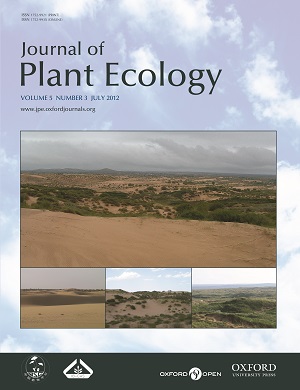Current Issue
-
 Volume 5 Issue 3
Volume 5 Issue 3
"TL: Inland dune landscape in Mu Us Sandland, Inner Mongolia, China, with different stages of dune fixation including mobile dunes in the foreground, fixed dunes in the middle ground, semi-fixed dunes in the distance and Daaobao Hill in the farthest reaches. TR, BL, BR: mobile dunes fixed dunes, semi-fixed dunes, fixed dunes. (From the research article: Variation in plant diversity and dominance across dune fixation stages in the Chinese steppe zone, Jianjiang Qiao et al.)"
IF: 3.9
CiteScore: 5.7
CiteScore: 5.7
Editors-in-Chief
Yuanhe Yang
Bernhard Schmid
Yuanhe Yang
Bernhard Schmid
CN 10-1172/Q
ISSN 1752-9921(print)
ISSN 1752-993X(online)
ISSN 1752-9921(print)
ISSN 1752-993X(online)







